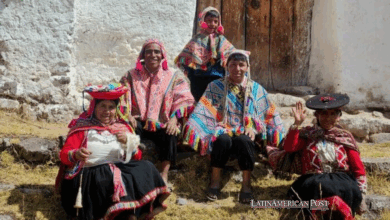Maya And the Three: Netflix’s Animated Series About A Warrior Indigenous Princess
The production is inspired by the Mesoamerican indigenous culture and creates a story full of adventure and fantasy. We recommend you see "Maya and the three".

“Maya and the Three” is a 9-episode, one-season animated series that introduces us to a colorful, action-packed universe inhabited by gods. Photo: YT-Netflix
LatinAmerican Post| Joshua Radesca
Escucha este artículo
Leer en español: Maya y los tres: la serie animada de Netflix sobre una princesa indígena guerrera
2021 has been a year in which we have been able to enjoy different big-budget productions that focus on Latin culture and its roots. As an example, we can mention “In the heights”, a film inspired by the musical of the same name by Lin-Manuel Miranda, which tells the story of several immigrants and children of immigrants who live in Washington Heights, a popular New York neighborhood. Likewise, we can point out the animated film "Vivo", which takes place between Cuba and Miami, and which pays tribute to Latin American and Caribbean music. As for premieres, we have "Encanto", a Disney film set in a magical town located in the mountains of Colombia and that introduces us to the Madrigals, an extraordinary family whose members have magical qualities. To this list, we can add "Maya and the Three" an animated series recently released by Netflix that brings us closer to the pre-Columbian indigenous world through fantasy.
"Maya and the Three" is a 9-episode, one-season animated series that introduces us to a colorful, action-packed universe inhabited by gods. The creator of this production is the Mexican Jorge R. Gutiérrez, author of the Nickelodeon series "El Tigre: the adventures of Manny Rivera" and the renowned film "The Book of Life" , which was inspired by Mexican culture and the feast of the day of the dead.
The series draws on the mythology of different indigenous cultures of Mesoamerica to create a fantasy story. For this reason, "Maya and the Three" brings us closer to pre-Columbian culture in an unusual way in film and television. The production mixes an entertaining narrative tone, battles, humor, and magic. It is designed to hook the little ones, but also to please the adult audience.
Also read: "Encanto": A Portrait of Colombia that does not ignore the Armed Conflict
A unique cast
The cast of voices is made up of renowned figures from the Hispanic world. In the leading role, we find Zoe Saldaña (Maya). Also participating are Diego Luna (Zatz, prince of bats), Gael García Bernal (the jaguar brothers), Alfred Molina (Mictlan, god of war), Kate del Castillo (Micte, goddess of death), Rosie Perez (Ah Puch ), Stephanie Beatriz (Chimi), Allen Maldonado (Rico), among others.
Maya's adventure
The central axis of this story is Maya, the brave and brave princess of the Teca kingdom, who during the celebration of her fifteenth birthday discovers that the god of war wishes to use her as a sacrifice to increase his power. If this happens the destiny of all humanity will be in danger.
Guided by an ancient prophecy, this princess will undertake an epic journey through different kingdoms to gather three wonderful warriors (the Warrior Rooster, the Warrior Skull, and the Warrior Puma), with whom she must face the gods of the underworld and thus save humanity.
In each of the 9 chapters, the action is a constant, the series is full of fast-paced fighting scenes, whose style is based on comics, anime and video games. It also highlights the design of the characters, the costumes and the visual richness of the entire production. Likewise, it is noteworthy that despite being designed for a young audience, "Maya and the Three" tackles topics of important emotional charge such as empowerment, the meaning of family, death or what it is to feel excluded. All this without abandoning its jovial and entertaining tone.
Ultimately, this is a series with a unique proposal that will captivate both fantasy lovers and those who want to see productions that are close to the indigenous and Latin imaginary.




